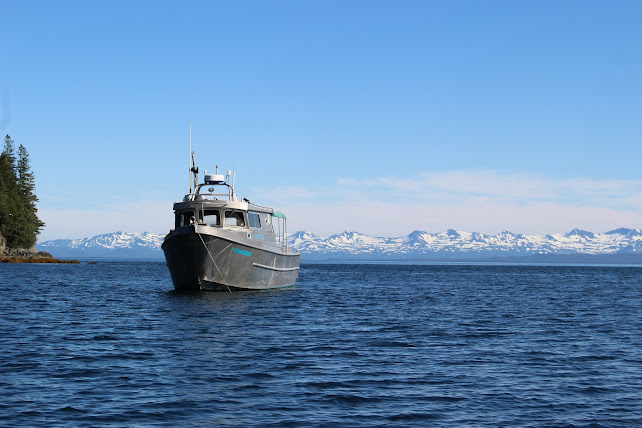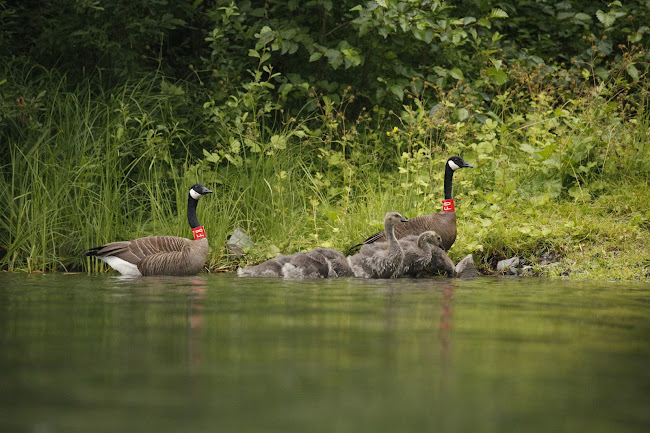Snapshots From Island Cameras
While going through island camera footage, one of the important things to analyze and record is what we determined as the nest fate while monitoring, and what the camera footage reveals is the actual nest fate. A lot of the times it matches, but in some cases they can be different. For example, one island was found to have no nest at all during monitoring, but camera footage revealed that it was actually a successful nest that hatched at least four goslings. However, the geese revisited the island several times after hatch, and the island was also occupied by a couple mallard broods throughout the day. Because of this high after-hatch activity, it wore down the nest bowl, and rid it of all membranes and most egg shells, making it look like there had been no nest at all this year.
Of the four unsuccessful nests we have found so far, Bald Eagles have been the culprits of two. Aerial shrub cover is an important factor to investigate during monitoring because of the keen eyesight of eagles.
Other times memory cards have been problematic, cameras have stopped working, or have been covered with spider webs and tilted down, making it impossible to see the nest outcome. So far, there have been nine successful nests and four unsuccessful, about half of the total cameras we have gone through. Many islands are also used as loafing sites, not just for Duskies, but other waterfowl as well, where they preen and rest during the day.
A few cameras were left up because islands were still active, but more will come as photos keep coming!
Freshly hatched goslings in the water for the first time.
When goslings have been on the nest for about 24 hours after hatching, the gander will join the rest of the family, and they will leave the island. This popular island even had another pair creeping in as the other left with their goslings.
Some islands that are lacking in shrub cover are often used as loaf sites.
This Mallard and her brood also made good use of this island after Duskies had their hatch, resting on it periodically throughout the day for several days.
This Mallard and her brood also made good use of this island after Duskies had their hatch, resting on it periodically throughout the day for several days.
Beavers are a constant battle as they munch on shrubs we put in place to enhance islands during maintenance.
Cameras are set to be light-based, and take one picture every 20 seconds to make one time-lapse file for each day it is active. Different from traditional game cameras, which are motion activated or heat signature activated, time-lapse format allows for more pictures in a smaller file size compared to if each picture was a separate file.
Two geese watching helplessly as a Bald Eagle eats their eggs.
Of the four unsuccessful nests we have found so far, Bald Eagles have been the culprits of two. Aerial shrub cover is an important factor to investigate during monitoring because of the keen eyesight of eagles.


















Comments
Post a Comment